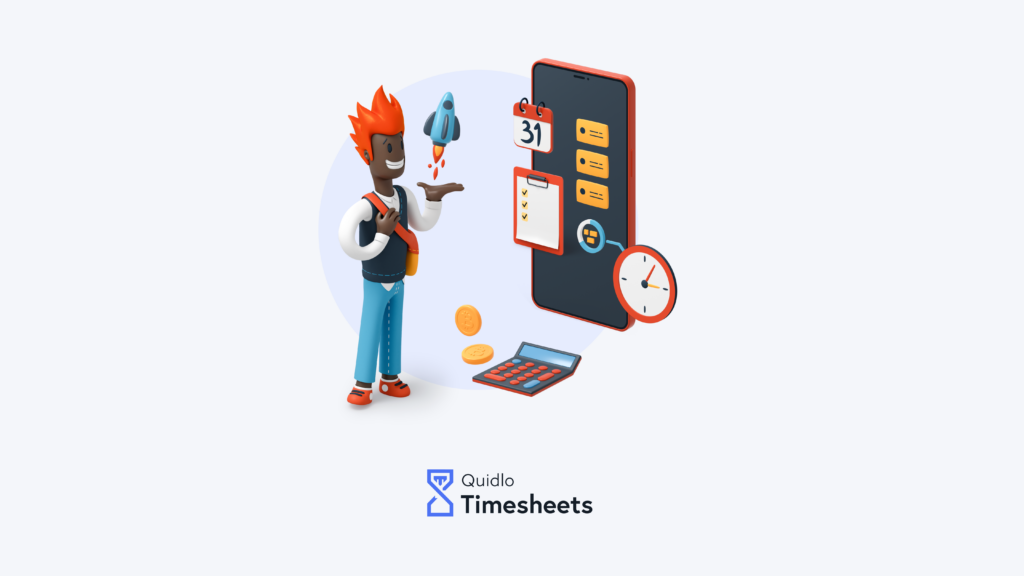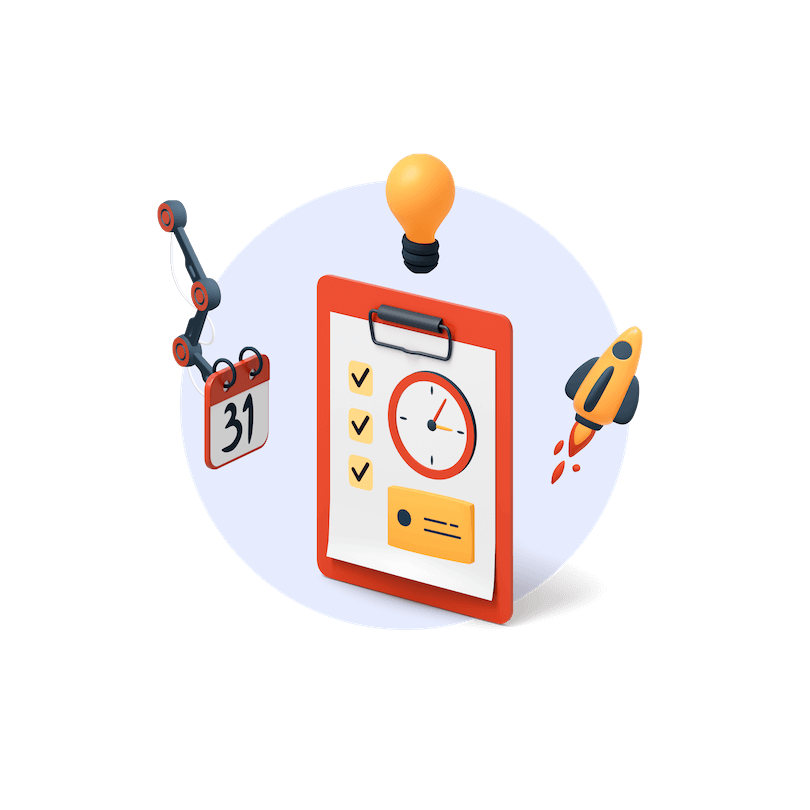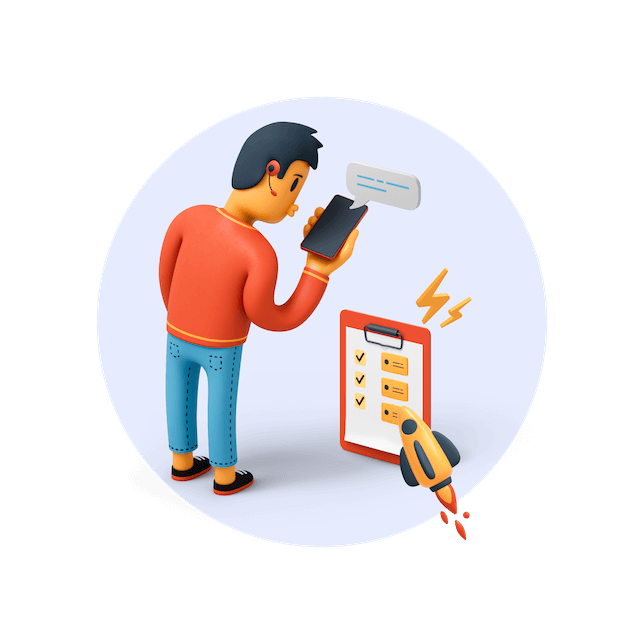
“The bad news is time flies. The good news is you’re the pilot.” – Michael Altshuler
Freelancing is a great,rewarding and highly flexible income source, but it comes with added responsibilities and admin that can become a drain if you don’t keep on top of them. Unlike a typical 9-5, being a freelancer puts you in charge of your pricing and time management – which can feel daunting at first. It can be incredibly easy to miss deadlines, take on far too much work, over or undercharge and lose track of time spent on tasks. This is why it’s important that you start time tracking as a freelancer. To help you get started, here’s some helpful techniques to make time tracking painless, plus some helpful digital apps that can help you accurately track your time.
Table of Contents
Why should freelancers track time?
Freelancers usually charge their clients one of two different ways – either by the finished project or milestones, or by the time spent working. Whether you charge for deliverables or by the hour, tracking your time is incredibly important.
Monitoring how long projects or tasks take will help give you a better idea of how much you should be charging your clients. For example, you might find that you’ve been undercharging your clients for animations as these take a long time to produce. Without tracking your time and keeping an accurate record of how long your work is taking, you can easily fall into the trap of overworking or under-valuing your time. Being a freelancer means you need to value your time, and time tracking can be just the thing to help you do so.
Time tracking also helps you to be realistic and avoid taking on too much work. Especially at the start, freelancers can find themselves taking on too much work at once. However, if you have a record of how long specific things take to produce, you can better manage your schedule and ensure that you’ll be able to meet deadlines without working round the clock. You should also track non-billable work time, such as marketing your services or sending invoices to make sure you’re factoring this into your schedule. Once you know how long things realistically take, you’ll be empowered to say ‘no’ when you need to.
Being a freelancer means you’re your own boss. While this has many advantages, it means that you need to hold yourself accountable, as well as motivating yourself. Without someone setting you deadlines and staying on your case, it can be difficult to stay motivated and on track. Tracking your time can help you to keep up the momentum on your work and help prevent you from procrastinating or wasting hours on trivial things.
So, time tracking is a key part of being a successful freelancer, but how can you go about it effectively? Here’s 8 great ways to time track:
8 helpful time tracking techniques for freelancers
1. Keep track of each task and length of time spent
Time tracking at the most basic level means you need to write down each different task you complete and then how long you spent on it. You can time yourself for the most accurate results, or estimate the time spent after. Separate out each task as much as possible to help give yourself a better understanding of how long individual things take you. For example, instead of tracking ‘3 hours spent designing,’ you could break it down further to:
- 30 minutes spent designing a social media image
- 1 hour spent creating a social media animation
- 1 hour spent creating a poster series
- 30 minutes editing a leaflet based on feedback
From this, you’ll know exactly how long social media animations take, so you’ll be able to charge future clients more accurately, while giving them a good idea of when they can expect to receive the finished asset.
2. Track activities that aren’t billable, too
Being a freelancer comes with other tasks that you won’t get paid for directly. Any admin tasks won’t be billable, but that doesn’t mean you shouldn’t track them in your time log. Getting a clear picture of how long it takes to, say, have a consultation with a client, will help you to plan your time accordingly and stay productive. Knowing you need to spend at least 2 hours a week doing your admin will help you factor it into your daily schedule, and avoid leaving it to the last minute.
3. But don’t track everything
There are some tasks that aren’t worth tracking, however. You don’t need to record how much time you spend on your breaks or for lunch. Focus only on the valuable work tasks (billable or non-billable) and leave everything else out.
4. Organise your tasks into projects
For better communication with your clients on how long their projects take, and to help you better plan your time, organise your tasks into projects. Let’s use the example from before:
Client A
Social Media Campaign Project: 1 hour, 30 minutes
- Designing a social media image: 30 minutes
- Creating a social media animation: 1 hour
Client B
Printed Advertisement Project: 1 hour, 30 minutes
- Creating a poster series: 1 hour
- Editing a leaflet based on feedback: 30 minutes
Plus, if you’re using a digital tool to track your time, organising tasks into projects will help you be able to filter them and generate reports.
5. Track time as you go
The best way to ensure you keep up with time tracking is to make it into a habit and do it as you go. Before starting any new task or project, set a timer or make a note of the time. Once you’ve completed each task, record it straight away. With enough practice, time tracking will become part of your work routine.
6. Keep things simple and clear
It’s important to make sure that your time log is simple and clear to use. Decide on a format and structure and stick to it consistently to avoid making time tracking a confusing process. Your time log should be something that you can quickly and easily refer to when estimating a project timeframe or communicating with your clients.
Be consistent when using the naming conventions too. Title your projects and tasks in a way that is clear and helpful. You may also want to include a description to help you understand what the tasks entailed.
7. Check everything for accuracy
Regularly check your time log to ensure accuracy. Small errors can be easily overlooked but can create bigger problems later down the line. Once you’ve added a new task, check it over a few times first. It’s best to do this when the task is still fresh in your mind.
8. Use software to help
To make time tracking as easy as possible, you can use software to help. There are a number of time tracking apps available to help freelancers better manage and track their time.
Most time tracking apps have a built in timer to use, so you can track your time as you go, in the most accurate way possible. They also allow you to add in tasks manually if needed.
Using digital apps can also be helpful due to the added features that are often included – aside from the core time recording ones. A number of time tracking software options include integrations with other popular tools, so that you can add time using apps you already use on a daily basis.
Time tracking apps are specifically useful for freelancers as they can help keep everything organised and consistent. They make it easy to organise projects and tasks, while often allowing you to filter and quickly find specific things. Most also allow you to generate reports and share them directly with others, which will allow for better communication with clients.
There are lots of time trackers available, here are some of the very best:
5 best time tracking apps for freelancers
1. Clockify
Clockify includes an in-built stopwatch and the ability to manually log time, making it easy to do this all in one place. One of the key advantages is that, on its free plan, Clockify allows you to mark specific hours as billable, helping you to generate reports based on this.
It also has a timesheets view which allows you to see tracked time for the whole week and the total for each day – making it easy to view everything together. There is also a calendar view which helps to further visualise your time.
Overall Clockify has a great, user-friendly and attractive design. The dark mode feature is a helpful touch depending on your preferences, and the reports generated are easy to understand and share or export.
2. Toggl Track
Toggl Track is very similar to Clockify in the user interface and features. Again, it includes an in-built timer, great reports and insights, the ability to create projects and different calendar views. Toggl also includes some calendar integrations, such as Outlook and Google Calendar which makes it helpful for busy freelancers who prefer everything in one place. Toggl is incredibly user friendly and easy to use right away without a tutorial.
However, unlike Clockify, Toggl doesn’t allow you to mark billable hours unless you start on a paid account.
3. Quidlo Timesheets
If you want a time tracker that is user friendly, flexible and intuitive, then Quidlo Timesheets is for you. Also with an in-built timer and manual entry option, Quidlo makes managing time simple. You can quickly generate reports which can be shared directly in the app. The filter and search function makes organising and locating specific reports especially straightforward.
Quidlo Timesheets has a free starter plan that includes a large number of features, including unlimited projects and web, mobile and desktop apps. This makes time tracking something you can do on the go, which is beneficial for any freelancers who work across different devices and locations.
Quidlo also has some key integrations that help the app fit into your daily life. It works with voice assistants such as Google Assistant, Siri and Amazon Alexa, which means you can easily add in tasks or start the timer handsfree.
4. Harvest
Harvest is an app which is perfect for freelancers who would like the added feature of invoicing. Unlike the other apps, Harvest allows you to generate invoices based on tracked, billable time which can be helpful for freelancers to stay on top of billing. The user interface is less ‘pretty’ and user friendly than Quidlo Timesheets or Toggl Track, but it does have a lot of complex features and detailed reporting options so can be a great option if you want that kind of experience.
Harvest does have a free starter plan, but it only includes two projects, meaning it’s really more of a free trial.
5. Fiverr Workspace
Fiverr Workspace, formerly And.Co, is a little different to the other apps mentioned as it is designed to be more of an all-encompassing tool to manage your freelancing business, with a time tracker as just one aspect of it. Like Harvest, Fiverr Workspace allows you to track time and generates invoices based on it. It has clear and organised timesheets, reporting capabilities and project creation. There’s quite a lot to this app so it’s not as easy to jump straight into using, but is a great idea if you’re already using Fiverr as a freelancer.
Time tracking is key
Whatever app you decide to use, time tracking is incredibly beneficial for your freelance business by giving you better oversight and control of your time, helping you to truly value it. Time tracking is also key to building long standing relationships with your clients, by allowing you to be transparent about how long their projects will take. Start time tracking today and get the most out of your freelancing business.







